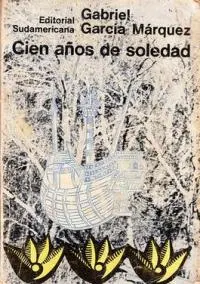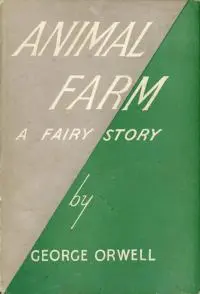Have you heard people talk about literary devices, but you weren’t sure what that meant, or how to use them? Let’s chat about some of the more common examples and then see how you might incorporate them into your fiction.
Literary Device: Defined
A literary device is a way of taking the meaning of your story beyond the literal interpretation, often through comparison. It is a writing technique that authors use to express ideas, convey meaning, and highlight important themes in a piece of text. Let’s get into some of my favorite examples.
1: Metaphor and Simile
People use these a lot and often struggle to understand the difference. What both of these do is compare one thing to another but in ways that are not literally applicable. “The television was our God.” With a simile, you’d say, “The television was LIKE a god.” Slightly different. We’re not saying it actually is a god, we’re saying it holds the power of a god—we worship it, we give it power, it has meaning in our life.
2: Foreshadowing
 This is simply the indication of something that will happen in the future. You’re dropping clues, you’re creating tension, and adding up to a moment (such as the climax) where it all comes together. You’re not trying to give away the plot, or the ending, you’re trying to hint at what’s coming. Something is in the woods—there are animal remains, blood smeared on trees, a clutch of strange eggs, weird feathers and scales. So when we get to a place where the dragon or werewolf or chupacabra is revealed, it will feel earned and inevitable.
This is simply the indication of something that will happen in the future. You’re dropping clues, you’re creating tension, and adding up to a moment (such as the climax) where it all comes together. You’re not trying to give away the plot, or the ending, you’re trying to hint at what’s coming. Something is in the woods—there are animal remains, blood smeared on trees, a clutch of strange eggs, weird feathers and scales. So when we get to a place where the dragon or werewolf or chupacabra is revealed, it will feel earned and inevitable.
3: Symbolism
This is taking a thing (an object, mark, character, image, or place) and having it represent something else. Blue means sadness, birds means freedom, a heart means love, a key means a solution, fire is passion, a dove is peace, etc. A recurring element can turn into a theme (or motif) as well. A symbol can be subtle or direct, it’s up to you.
4: Flashback
This is an interjected scene that leaps back in time away from the current moment in your story. Typically this is used to give us backstory or history, to unpack a moment, scene, or trauma from the past that influences and helps to explain the present (or future). Show us the origin story of the hero or villain, born out of an untimely death or loss. Show us the moment they got their superpowers—via spider, spell, birth, or lab accident. Show us a childhood meal with family members and how much your protagonist loved their parents.
5: Personification and Anthropomorphism
This is the attribution of human nature or qualities to inanimate objects or animals. It brings parts of your story to life, and can be quite powerful, especially in speculative fiction. The wind howled, the table creaked, the sun smiled down on us, the book danced around the room, the tree branches reached to the sky. I love using this in supernatural fiction, as it adds layers, depth, emotion, and tension.
6: Anachronism
Do you know this one? You are probably already using it. It’s an error in chronology, something taken out of time. It’s the futuristic clamshell phone in It Follows where the rest of the story almost feels nostalgic or retro. It’s that weird Western that uses lasers instead of bullets. It’s the humor of Mel Brooks in Blazing Saddles. It will cause the reader to raise an eyebrow and wonder what’s going on, how this is possible. It’s something out of time and place—so we ask ourselves why it’s happening.
7: Cliffhanger
 This is a device where you end a scene, chapter, or entire book with a dramatic moment, and then don’t finish it. It pushes the reader forward, seeking answers, wanting to know what happened. Did Raymond survive? What caused the explosion? What exactly WAS that thing in the window? I think Josh Malerman did a great job of using cliffhangers in his novel, Bird Box, quite often dropping a bombshell revelation and then flipping over to the other timeline. It forced me to keep reading. I actually read the entire book the day after Thanksgiving, all in one sitting. I could NOT put it down. Kudos, Josh.
This is a device where you end a scene, chapter, or entire book with a dramatic moment, and then don’t finish it. It pushes the reader forward, seeking answers, wanting to know what happened. Did Raymond survive? What caused the explosion? What exactly WAS that thing in the window? I think Josh Malerman did a great job of using cliffhangers in his novel, Bird Box, quite often dropping a bombshell revelation and then flipping over to the other timeline. It forced me to keep reading. I actually read the entire book the day after Thanksgiving, all in one sitting. I could NOT put it down. Kudos, Josh.
8: Allegory
This is the representation of an abstract meaning through concrete forms and events. What does that mean? I’ll give you some examples. One that people often mention here is The Tortoise and the Hair. On the surface this is about two animals racing each other, but the underlying meaning is determination and consistency triumph over arrogance. You could also look at Animal Farm. The plot is about a bunch of animals that rebel against a farmer. But the underlying story has to do with Orwell’s disillusionment with the Boshevik Revolution and the Russian government. You see it in fables and fairy tales (Aesop and Grimm for example). You see it in philosophy, such as in Plato’s The Allegory of the Cave. I think you get what I mean here—what is the deeper, underlying message, the moral of the story.
9: In Media Res
This is simply Latin for “in the midst of things,” and it’s a great way to start your story—throwing us into the middle of your tale. You don’t need to start us at the birth of your character, instead start us at the inciting incident—the moment in time after which things will never be the same. “Many years later, as he faced the firing squad, Colonel Aureliano Buendía was to remember that distant afternoon when his father took him to discover ice.” This is the opening line of One Hundred Years of Solitude by Gabriel García Márquez, and a classic example.
10: Paradox
A paradox is a statement that seems self-contradictory or absurd but in reality expresses a possible truth. Less is more, for example. Or the classic neo-noir trope, “I’m a compulsive liar.” Or, 1984 and their mantra of, “War is Peace, Freedom is Slavery, Ignorance is Strength.” You can then use these statements to create a moment of tension, to turn your narrator into an unreliable one, or to create an entire society.
In Conclusion
There are many literary devices out there, and this is only the tip of the iceberg—see what I did there? But these ten (and many others) can help you to tell layered, visceral, impactful stories filled with imagery, depth, and meaning. Good luck!

About the author
Richard Thomas is the award-winning author of seven books: three novels—Disintegration and Breaker (Penguin Random House Alibi), as well as Transubstantiate (Otherworld Publications); three short story collections—Staring into the Abyss (Kraken Press), Herniated Roots (Snubnose Press), and Tribulations (Cemetery Dance); and one novella in The Soul Standard (Dzanc Books). With over 140 stories published, his credits include The Best Horror of the Year (Volume Eleven), Cemetery Dance (twice), Behold!: Oddities, Curiosities and Undefinable Wonders (Bram Stoker winner), PANK, storySouth, Gargoyle, Weird Fiction Review, Midwestern Gothic, Gutted: Beautiful Horror Stories, Qualia Nous, Chiral Mad (numbers 2-4), and Shivers VI (with Stephen King and Peter Straub). He has won contests at ChiZine and One Buck Horror, has received five Pushcart Prize nominations, and has been long-listed for Best Horror of the Year six times. He was also the editor of four anthologies: The New Black and Exigencies (Dark House Press), The Lineup: 20 Provocative Women Writers (Black Lawrence Press) and Burnt Tongues (Medallion Press) with Chuck Palahniuk. He has been nominated for the Bram Stoker, Shirley Jackson, and Thriller awards. In his spare time he is a columnist at Lit Reactor and Editor-in-Chief at Gamut Magazine. His agent is Paula Munier at Talcott Notch. For more information visit www.whatdoesnotkillme.com.







